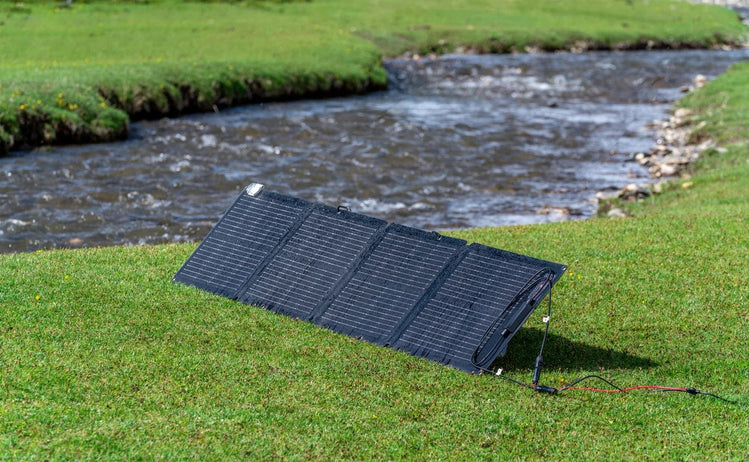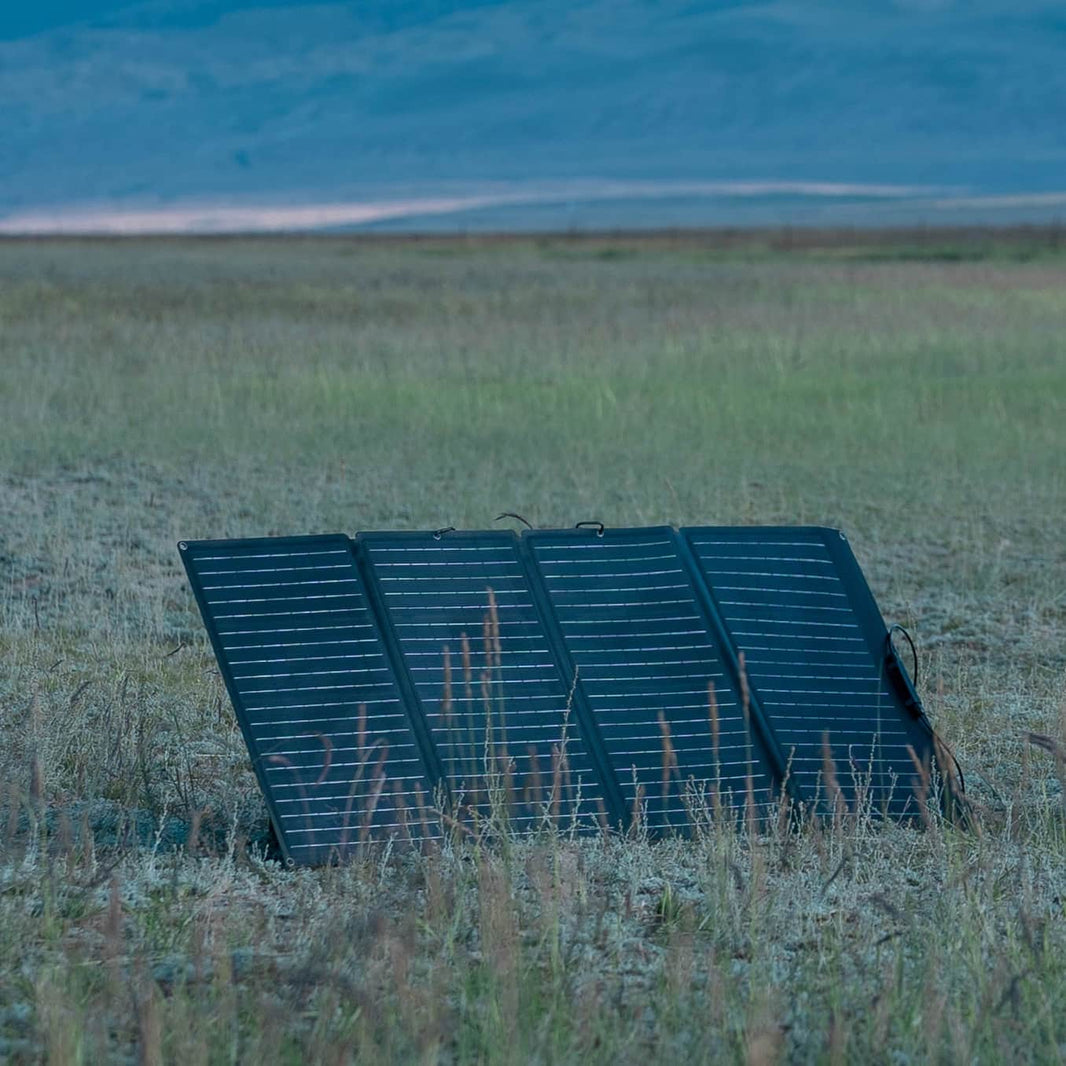The Silent Revolution: How Quiet Power is Changing Outdoor Recreation
The familiar noise of gas generators and boat motors is beginning to fade from many campsites and lakes. In its place is a significant shift toward battery-powered equipment. This quiet change is driven by advances in portable power stations, efficient solar panels, and silent electric motors. It's more than just a simple gear upgrade; this move away from fossil fuels is altering the fundamental experience, ethics, and accessibility of outdoor recreation.
The Three Technologies Behind Quiet Power
This shift is made possible by three main pieces of technology. While each serves a different function, they work together to create a reliable system for off-grid power and travel.
Portable Power Stations
The first key item is the portable power station. These units are self-contained, high-density lithium-ion battery packs with various outlets (AC, DC, USB) housed in a durable case. They effectively serve as the modern answer to the search for a truly quiet generator, delivering clean, silent power without the noise, fumes, or maintenance of their gasoline-powered counterparts. For campers and overlanders, this technology is a major improvement, allowing them to operate small refrigerators, induction cooktops, medical devices like CPAP machines, and personal electronics.
Portable Solar Panels
While a power station offers freedom from a generator, portable solar panels offer freedom from the grid. These modern panels are lightweight and often foldable, designed to plug directly into a power station. They are used to recharge the battery with sunlight, creating a self-sustaining system when paired with a power station. This capability allows for much longer trips into remote areas, as users can replenish their power supply daily without returning to a power source.
Brushless DC Electric Motors
The third key technology is the brushless DC motor. These motors are highly efficient, converting more electricity into force with less waste heat. They are mechanically simple, reliable, and provide strong torque. Their main benefits, however, are their near-silent operation and lack of emissions. Compared to internal combustion engines, they drastically reduce noise and pollution. You can find them in a growing number of applications, from electric-assist on e-bikes to propulsion systems on electric UTVs and boat trolling motors.
How Quiet Power is Changing Outdoor Recreation
The practical application of these technologies—portable power stations, solar panels, and silent electric motors—is changing how people approach common outdoor activities, replacing older methods with quieter and more capable alternatives.
Provide Silent, On-Demand Power at Campsites
The traditional campsite experience involved a compromise: to get power, you needed a gas generator. Even models marketed as a 'quiet generator' still produce disruptive noise and fumes, and are often subject to strict quiet hours. This new technology removes that conflict. Campers can now run lights, kitchen appliances, and other devices in complete silence at any time, without disturbing wildlife or neighbors. This enhances comfort and makes extended stays in remote, undeveloped locations more feasible.


Improve Angler Stealth and Access to Restricted Waters
For anglers, sound is a critical factor, as the noise and vibration from a gas outboard can scare fish. While electric trolling motors have been used for years for quiet maneuvering, powerful, fully electric outboards are becoming more common. These systems allow for a silent approach to fishing spots and a peaceful cruise. Furthermore, many lakes and reservoirs ban internal combustion engines to protect water quality; electric motors grant boaters access to these protected bodies of water.
Enable a Stealthier Approach for Hunters
A similar shift is happening in hunting. Accessing remote hunting grounds with loud ATVs often alerts game from far away. The newer approach uses stealthy electric-assist bicycles and silent electric UTVs. These vehicles allow hunters to cover ground quickly with a minimal sound and scent profile, which improves their chances of approaching an animal undetected.
Broaden Trail Access and Quieting Off-Road Vehicles
On trails, this technology is broadening access. For years, users were largely split between muscle-powered mountain bikes and loud, high-emission dirt bikes or ATVs. E-bikes provide a middle ground, with an electric assist that makes long climbs and distances manageable for more people, including those with physical limitations. For off-road vehicle users, electric UTVs offer a much quieter, less intrusive trail experience compared to their gas counterparts.
Broader Impacts: The Benefits and Challenges of Quiet Power
The shift to quiet power has wide-ranging effects, creating clear advantages for the environment while also introducing new conflicts and questions that need to be addressed.
The Benefits: A Quieter and Cleaner Outdoors
The most obvious plus is how much quieter everything is. When you get rid of engine noise, you can actually hear nature, which makes for a more peaceful trip and is less stressful for animals. It’s also much cleaner—without small gas engines, there are no exhaust fumes hanging in the air or oily sheens on the water. All of this means wildlife is less spooked, so you have a better chance of seeing animals just going about their business.
The Challenges: New Debates and Environmental Costs
But it’s not all perfect. E-bikes, for example, have kicked off a huge argument about whether they belong on traditional hiking and mountain bike trails, leaving land managers scrambling to create fair rules. There’s also the hidden environmental cost of the batteries. They’re clean to use, but making them involves mining for materials like lithium, and recycling them properly is still a major challenge. Finally, there's the question of whether being able to power all our devices easily actually defeats the purpose of trying to "unplug" in nature.


Rethink Your Outdoor Footprint!
The move to quiet power, fueled by battery and motor advancements, is more than a trend—it’s a fundamental change in how we interact with nature. It represents a shift from overpowering the wild with loud machinery to coexisting more sustainably. While this technology introduces new debates around trail use and its environmental lifecycle, the overall direction points toward a future where the outdoors is quieter, cleaner, and more accessible for everyone, prompting us to reconsider our place within the natural world.
FAQs about Quiet Power
Q1: How big of a portable power station do I actually need?
It really comes down to what you’re plugging in. For the basics—like keeping your phone and camera charged or running some lights—a smaller unit (around 300-500 watt-hours) is perfect. If you're running something all night, like a CPAP machine or a camp fridge, you'll want to step up to a mid-size station (500-1000Wh). For power-hungry gear like a coffee maker or an electric skillet, you'll need one of the bigger models (1000Wh+). Just take a look at the power needs (in watts) of your gear to be sure.
Q2: How long does it take to charge a power station with solar panels?
That's the million-dollar question, and it really depends. Think of it this way: on a bright, sunny day, a 100W panel might fully charge a 500Wh station in about 6 to 8 hours. But if it's cloudy, that time can easily double. It’s better to think of solar as a way to top off your power during the day, not as a super-fast charger.
Q3: Are e-bikes allowed on all hiking and mountain biking trails?
No, definitely not. The rules for e-bikes are complex and change depending on who manages the land. National Parks, U.S. Forest Service lands, and state or local parks all have different regulations. Some trails allow specific classes of e-bikes, while others ban them completely from non-motorized trails. It is essential to check the official website or contact the ranger station for the specific trail you plan to visit before you go.
Q4: Is a portable power station more expensive than a gas-powered quiet generator?
Looking at the initial price tag, yes, a good power station and solar panel setup will often cost more upfront than a comparable gas generator. But the savings add up over time. You're not buying gas, and there's virtually no maintenance—no oil changes, no spark plugs. Most people find the cost is worth it for the silence and lack of fumes alone.
Q5: Is battery power truly better for the environment than gas?
It's complicated, but for the place you're actually camping or recreating in, yes. Using a battery means no engine noise, no exhaust fumes, and no spilled gas. That's a huge win for the local wildlife and for anyone else trying to enjoy the peace and quiet. Of course, making and disposing of batteries has an environmental cost. So while it's not a perfect zero-impact solution, it's a massive improvement for keeping our wild places clean and quiet.